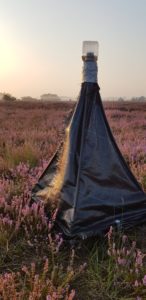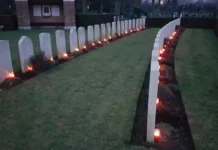The Staatsbosbeheer (The Forestry Commission) is working on restoring the Strabrechtse Heide. This is a nature reserve on the outskirts of Eindhoven.
Various studies are being carried out to ensure the remedial work runs smoothly. Different crates and ‘wigwams’, where more information is being gathered, are scattered across the heathland.
The first study is called ‘Restoration measures for fauna-depleted dry heathland’. In this study, research is being done on how phosphorus shortages and soil acidification can be solved. Among other things, phosphorus supplies energy and provides good root growth for plants.
‘Wigwams’

The so-called ‘wigwams’, which are currently scattered across the heathland, are insect traps. The traps are black with a clear jar at the top. The insects are lured to the trap because this is the structure’s only light source. This device is being used to measure how many fly and mosquito larvae live in the soil and vegetation. In the laboratory, the results are compared with those from other test sites.
The ‘Opportunities for old, dry heathland in the heathland landscape’ study compares old, uninhabited dry heathland’s soil and vegetation development. A laboratory experiment has been set up with soil columns. Here, the drought’s effects on the old heather soils are examined.
Source: www.studio040.nl
Translator: Bob
Editor: Melinda Walraven
















